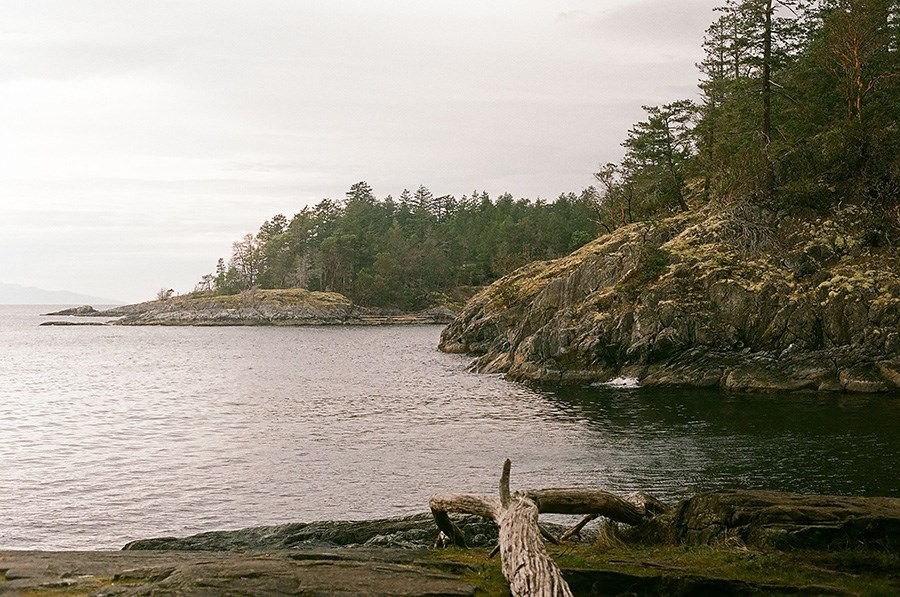Within a fragile ecosystem where slow growing moss and lichens cling to exposed rock faces, I spy a bag of dog poop tied and left on the side of the trail – the responsible dog and irresponsible owner nowhere in sight. There are arbutus trees with their signature peeling bark bearing the signatures of people who carved their initials into their trunks, long gone but for the scars they left behind. Then I see a couple sitting on the other side of a roped off section, enjoying the view. The slope was gentle where they sat, so they must have figured it was safe. But the old rope, well-worn by the elements and broken in some areas, is not there for the safety of trail-goers but to protect the delicate flora that grows there.
It’s my first visit to Francis Point Provincial Park and as I take in the natural beauty of it all, I can’t help but be irked by the aftermath of some careless visitors. Howard White, the president of the Francis Point Marine Park Society, told me there were some recent upgrades to the staircase and bridges on the path. And while there is a part-time warden who cares for the area, White always carries a pickup stick and bag to take out any garbage he finds. He’s found an illegal trail partially slashed, a biker was spotted recently, and the fire department has been called a handful of times. All in an area deemed only capable of withstanding low-impact activities.
At a small clearing looking toward Texada Island, a sign describes the local lifeform as our “miniature old growth community.” Most of us are likely more familiar with “old growth” describing the towering giant trees that set roots down on the B.C. coast centuries ago and have since spanned generations of human life – not the lichen and moss that you have to look closely to spot.
The tall trees are awe-inspiring, and it’s no wonder that activists strive to protect them. They remind us of how old our planet is, of the life that came before us and the life that will continue long after – as long as we don’t get in its way. Yet on the coast, another old growth specimen is likewise unprotected and also faces irreversible damage from human actions and doesn’t receive the same media coverage. On this miniscule scale, however, even a small misstep can harm the sensitive mosses and lichens.
The footprints we leave behind in this case are literal. A BC Parks management plan calls the park “an opportunity to experience a rare undisturbed coastal forest site in this area of the Sunshine Coast.” After years of being privately owned, White said the area was pristine and now has seen only minimal impact.
“You compare it to Lighthouse Park or someplace like that, there’s not a square inch of Lighthouse Park that’s not heavily damaged from just unrestrained trampling by people,” White said. “And hopefully that’ll never happen here.”



